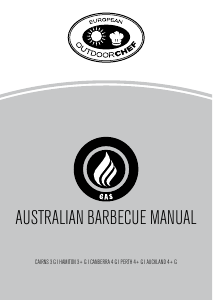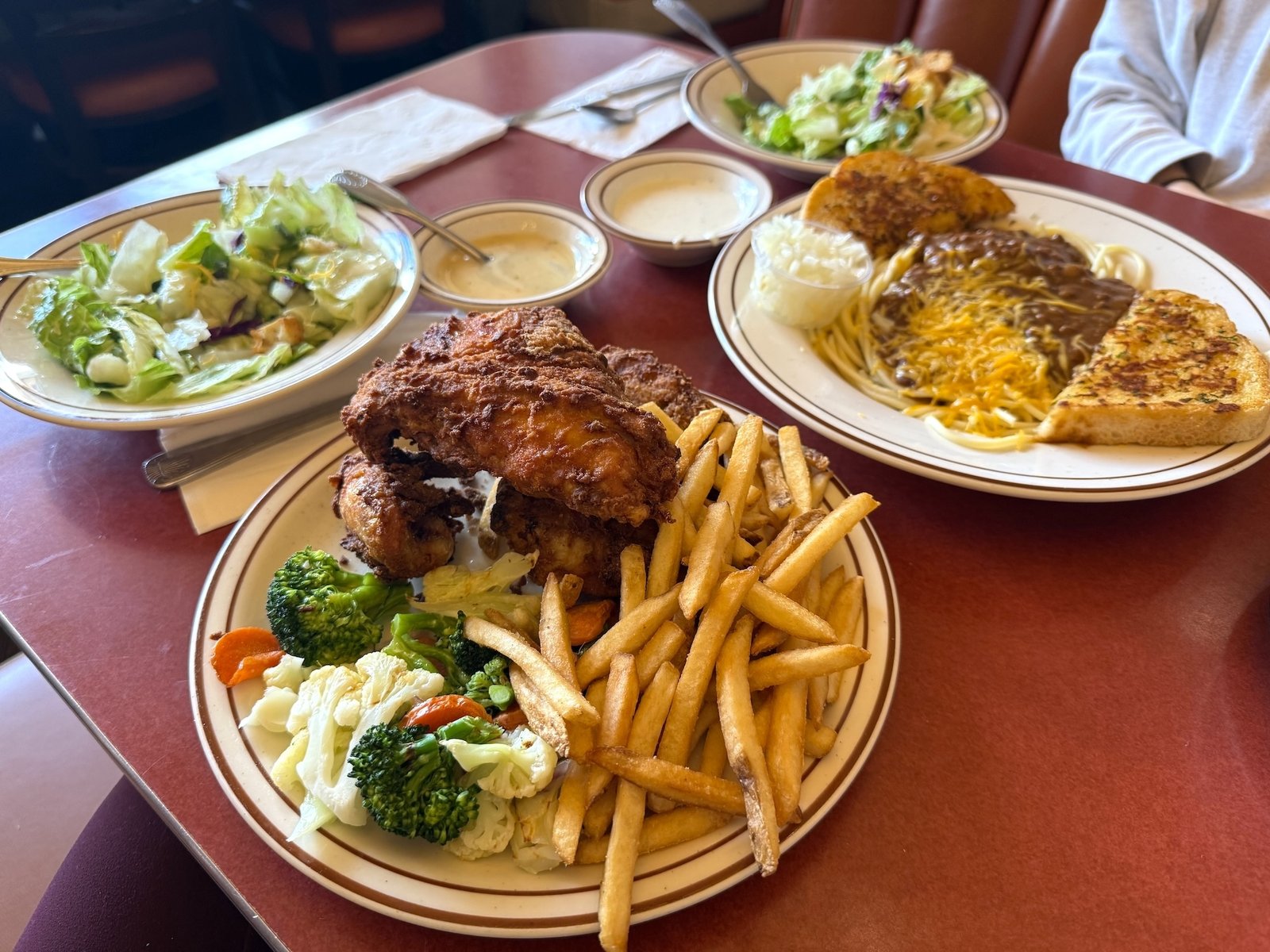Embarking on your outdoor cooking journey can be both exciting and a bit intimidating, especially if you’re new to grilling and outdoor meals. The outdoor chef beginners guide aims to provide you with a comprehensive roadmap to get started confidently. From choosing the right gear to mastering simple outdoor meals, this guide will turn you into a skilled outdoor chef, even as a complete novice. Whether you’re planning weekend barbecues or casual backyard dinners, understanding the essentials will ensure delicious results every time and make your outdoor cooking experience enjoyable and rewarding.
Welcome to Outdoor Cooking: A Beginner’s Guide

Diving into outdoor cooking opens a world of flavors, social experiences, and personal achievement. The key is to approach it with patience and curiosity. Many first-time outdoor chefs worry about failure or complex techniques, but the truth is that outdoor cooking is accessible and customizable to your skill level. A beginner-friendly attitude, along with the right tools, can turn backyard grilling into a delightful hobby that grows over time.
Before you fire up your grill, it’s important to understand what outdoor cooking entails. It’s not just about grilling steaks—it’s about exploring diverse techniques, discovering easy-to-make meals, and building confidence in a relaxed outdoor setting. Your journey starts with understanding the basics, picking suitable equipment, and learning some useful tips to make your outdoor food memorable and fuss-free.
In this guide, we’ll walk through essential gear, practical tips, manageable techniques, and simple recipes, all tailored for entry-level outdoor cooking. By the end, you’ll see how outdoor cooking can become an enjoyable part of your lifestyle, transforming backyard spaces into personal culinary playgrounds.
Essential Beginner-Friendly Outdoor Grilling Gear

Getting started with outdoor chef skills requires the selection of the right equipment—nothing overcomplicated, just reliable, accessible tools that make cooking straightforward. Lightweight, portable, and versatile gear will make your venture seamless and help you build confidence as you experiment with different types of foods and techniques. Think of this gear as your foundation—quality, simplicity, and safety should be your guiding principles.
Choosing the Right Grill
The first big decision is selecting your grill—gas, charcoal, or electric. Each type has pros and cons, but for beginners, entry-level outdoor cooking often aligns best with gas grills for their ease of use and consistent temperature control. Charcoal offers authentic flavor but requires more patience and skill, while electric grills provide convenience, especially for small spaces or indoor-outdoor use.
Gas grills are popular for their quick heating, precise temperature control, and cleaner operation. They are typically easier to learn on for getting started grilling, giving you more control and less cleanup. If you’re looking for a beginner-friendly option, opt for a portable gas grill that can be set up on your patio or balcony. Over time, you can explore other types but start simple.
Essential Tools for Outdoor Cooking
A handful of beginner-friendly outdoor gear can make all the difference. Basic tools will include tongs, a spatula, a basting brush, and a meat thermometer. These inexpensive but crucial items help you manage food precisely, avoid overcooking, and ensure safety with proper meat temperatures. Invest in sturdy, heat-resistant handles and dishwasher-safe parts for easy cleaning.
Additionally, don’t overlook accessories like a grilling brush, skewers, a grill mat, and a portable side table. These elements streamline your cooking process and boost versatility, so you’re prepared for various recipes and techniques. Having the right tools will encourage experimentation and take your outdoor meal game to the next level.
Safety and Maintenance Essentials
Safety always comes first. When choosing beginner-friendly outdoor gear, consider grills with safety features like automatic shut-off or cool-touch handles. Always operate your grill outdoors in well-ventilated areas, and keep a fire extinguisher nearby. Understanding basic maintenance—like cleaning your grill grates regularly—will ensure consistent performance and prevent flare-ups.
Maintenance involves removing ash and grease buildup, checking gas connections, and properly storing your equipment. Proper maintenance not only prolongs the life of your gear but also guarantees safer, cleaner cooking. For first-time outdoor cooks, gaining familiarity with gear maintenance is essential for long-term success and confidence-building.
First-Time BBQ Tips for Delicious Results

Venturing into first time BBQ tips can significantly enhance your initial outdoor cooking experiences. Achieving perfectly grilled foods is more straightforward than it seems when you follow a handful of practical guidelines. Patience, preparation, and attention to detail will help you master flavors and impress your guests—even on your first try.
Prepping and Marinating
Preparation begins well before the grill heats up. Marinating meats, vegetables, or even fruits adds flavor and tenderizes ingredients, making your dishes more appealing with minimal effort. For beginners, simple marinades like olive oil, lemon juice, garlic, salt, and pepper are effective and easy to make.
Also, prepping ingredients in advance—such as cutting, seasoning, and arranging—reduces stress during grilling. Keeping food at the right temperature before cooking ensures even doneness and a more consistent result. Planning your meal with simple marinades and prep steps sets a great foundation for a successful BBQ experience.
Managing Temperatures and Timing
A common mistake for beginners is uneven cooking caused by incorrect temperature management. Use your entry-level outdoor cooking equipment’s temperature controls or a meat thermometer to monitor levels closely. Start with medium heat to avoid burning and ensure even grilling, especially for thicker cuts.
Timing is equally crucial. Overcooking leads to dry meat or burnt vegetables, while undercooking results in food safety risks. A good tip is to use the touch test or a thermometer to gauge doneness. For getting started grilling, it’s advisable to keep an eye on cooking times, and always rest your meat after removing it from the grill to retain juices.
Practical Tips for Flawless Grilled Foods
Consistency is key for repeat success. Avoid flipping food too often—give each side time to develop a proper sear. Using a light oil or non-stick spray on your grill grates prevents sticking, especially for delicate foods like fish or certain vegetables.
Don’t forget about the importance of direct versus indirect heat. For beginners, starting with direct heat for quick cooking and moving to indirect heat for larger or thicker items helps prevent charring and ensures all food is cooked through. Flexibility and patience during your first sessions will pay dividends.
Getting Started: Mastering Basic Grilling Techniques
Solid fundamental techniques will make all your outdoor meals enjoyable and mistake-free. Learning proper handling, heat management, and cooking stages is instrumental in transforming novice efforts into confident outdoor chef skills.
Controlling Your Heat Zones
One of the most valuable skills in getting started grilling is understanding how to manipulate heat zones. Setting up your grill with hot, medium, and cool sections allows you to cook different foods at optimal temperatures. For Beginners, practicing heat management—by adjusting the lid, vents, or burners—can dramatically improve results and prevent burning.
For example, searing steaks over direct high heat for flavor, then moving to indirect low heat to finish cooking, creates a flavorful crust without overcooking the interior. Developing an intuitive sense of zone control helps you handle a variety of foods with ease and confidence.
Grilling Safety and Food Handling
Safety protocols during outdoor cooking cannot be overstated. Always keep a safe distance from flammable objects, and use tools with long handles to avoid burns. Turn off your grill promptly after cooking and store fuels properly.
Food handling is equally critical. Keep raw meats separate from cooked foods by using different utensils and plates. Wash hands frequently, and ensure meats reach proper internal temperatures. These habits not only guarantee safety but also elevate the quality of your outdoor meals.
Simple Techniques for Flavor Development
Boost flavors through techniques like marinating, brining, or applying dry rubs. Also, techniques like basting with marinade during cooking or smoking with wood chips can deepen flavors further. For the beginner, focus on mastering fundamental skills like flipping at the right time, maintaining consistent sizes of food items, and adjusting heat.
Experimenting with different seasonings, ingredients, and timing will develop your palate and give your outdoor cooking a signature style. Remember, patience and practice are your best partners on this journey.
Simple & Satisfying Outdoor Meals for Culinary Newcomers
When starting, it’s best to focus on recipes that are straightforward but rewarding. Simple outdoor meals to try include classics like burgers, hot dogs, grilled chicken, kabobs, and grilled vegetables. These dishes are forgiving, quick to prepare, and provide a solid foundation for building your skills and confidence.
Easy Recipes for Beginners
For a beginner, recipes should involve minimal steps and ingredients. For example, marinate chicken breasts with olive oil, lemon juice, garlic, and herbs, then grill over medium heat until cooked through. Pair with grilled vegetables for a complete meal. Burgers are even simpler—just season ground beef, shape into patties, and cook on direct heat.
Vegetarian options like vegetable skewers or grilled pineapple are excellent options for variety and nutrition, and can be seasoned with marinades or spices. These simple outdoor meals to try help you focus on mastering techniques without overwhelming yourself.
Tips for Presentation and Enjoyment
Presentation adds fun to outdoor meals. Use colorful plates, garnish with fresh herbs, or serve directly from the grill to the table. The dining experience doesn’t have to be complicated—your focus should be on enjoying good food and company.
Additionally, experimenting with side dishes like baked potatoes, salads, or freshly baked bread can elevate a simple meal into an occasion. Remember, outdoor cooking is as much about the experience and enjoyment as it is about the food itself.
Incorporating Variety for Learning
Trying new ingredients or techniques keeps outdoor cooking exciting. Switch from beef to turkey, seafood, or plant-based proteins to challenge your skills. Different marinades, rubs, or smoke woods can influence flavors and expand your palate.
As you progress, aim to cook a variety of simple outdoor meals to try regularly. This approach keeps your outdoor chef hobby alive and helps you refine your preferences and techniques along the way.
Entry-Level Outdoor Cooking – Building Confidence and Skills
Developing proficiency in entry-level outdoor cooking requires patience, practice, and a mindset open to learning. As your confidence grows, you’ll naturally tackle more complex recipes and techniques, but the foundation remains rooted in the basics. This section will explore how to nurture that growth and keep your outdoor culinary journey enjoyable.
Cultivating Consistency and Routine
Consistency is key to improving. Set regular practice sessions, start with familiar recipes, and aim to replicate successes. Keep notes on timings, marinades, and techniques to help you refine your process. Over time, you’ll develop a muscular memory and instinctual understanding for outdoor cooking.
Building routines, such as preheating your grill properly or prepping ingredients beforehand, simplifies the process and reduces errors. Remember, mistakes are part of the learning process, so view them as opportunities to refine your craft.
Expanding Your Outdoor Chef Repertoire
Once comfortable with basics, consider branching into different styles like indirect cooking, smoking, or using different types of fuel. Invest in versatile tools such as a cast-iron skillet, smoker box, or auxiliary side burners. These additions will broaden your capabilities without overwhelming your initial skill set.
Engage with online communities, recipe blogs, or local workshops. These resources can inspire new techniques and provide helpful feedback. The more you learn, the more confident and creative your outdoor cooking will become.
Sharing and Growing Your Outdoor Cooking Passion
Cooking outdoors is often as much about community as it is about food. Share your experience with friends or family, organize backyard cookouts, and get feedback. These social aspects boost motivation and deepen your understanding of flavors and techniques.
Gradually, challenge yourself with new recipes or ingredients, but always keep the fun and simplicity at the core. Outdoor cooking success is cumulative—each meal builds your skills and confidence, paving the way for culinary mastery.
Conclusion
The journey towards becoming a proficient outdoor chef begins with understanding the basics—selecting beginner-friendly outdoor gear, mastering first time BBQ tips, and practicing simple outdoor meals to try. Every step, from controlling your grill’s heat to safely handling food, contributes to your confidence and enjoyment. Embracing entry-level outdoor cooking not only makes outdoor meals more accessible but turns outdoor spaces into personal culinary playgrounds. With patience, enthusiasm, and a willingness to learn, you’ll soon find that outdoor cooking is more than just a way to make food—it’s a delightful hobby that builds community, creativity, and delicious memories.






